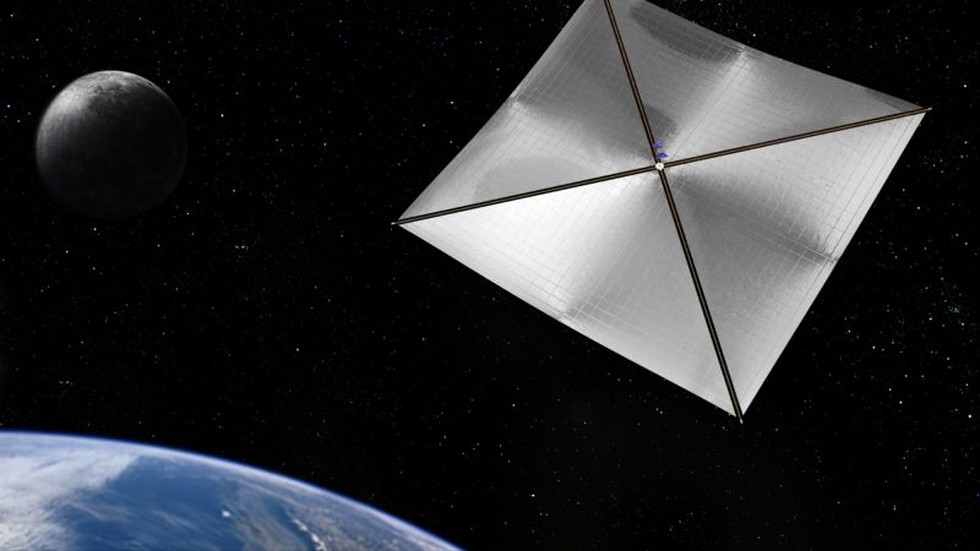
About Advanced Composite Solar Sail System (ACS3):
- It is a NASA technology demonstration mission designed to characterize solar sail structures technologies for future small spacecraft to engage in deep space missions requiring long-duration, low-thrust propulsion.
- Launched in 2024, ACS3 will deploy a sail about the size of a small apartment from a toaster oven-size spacecraft.
- At its core, ACS3 is a CubeSat, a small satellite built to standardized dimensions. It features four 7 m long deployable composite booms.
- Just as a sailboat is powered by wind in a sail, solar sails employ the pressure of sunlight for propulsion, eliminating the need for conventional rocket propellant.
- Space missions have demonstrated that small spacecraft can use solar sails to change their orbits, expanding their possible uses.
- Future solar sail missions will need bigger sails and lighter materials to maximize their performance.
- ACS3 uses lightweight carbon fiber sail booms instead of traditional metal booms.
- This will be the first test of this technology in space.
- What is solar sailing?
- Light is made up of particles called photons. Photons don’t have mass, but they have momentum.
- As sunlight reflects off a shiny solar sail, some of its momentum gets transferred, giving the sail a small push.
- This push is slight but continuous and, over time, can impart more thrust to a spacecraft than traditional chemical rockets.
- Solar sails can reach unique destinations that are difficult or impossible to access with other propulsion systems.
- This may also be the best option for interstellar travel.
2. National Institute for the Empowerment of Persons with Intellectual Disabilities (NIEPID)
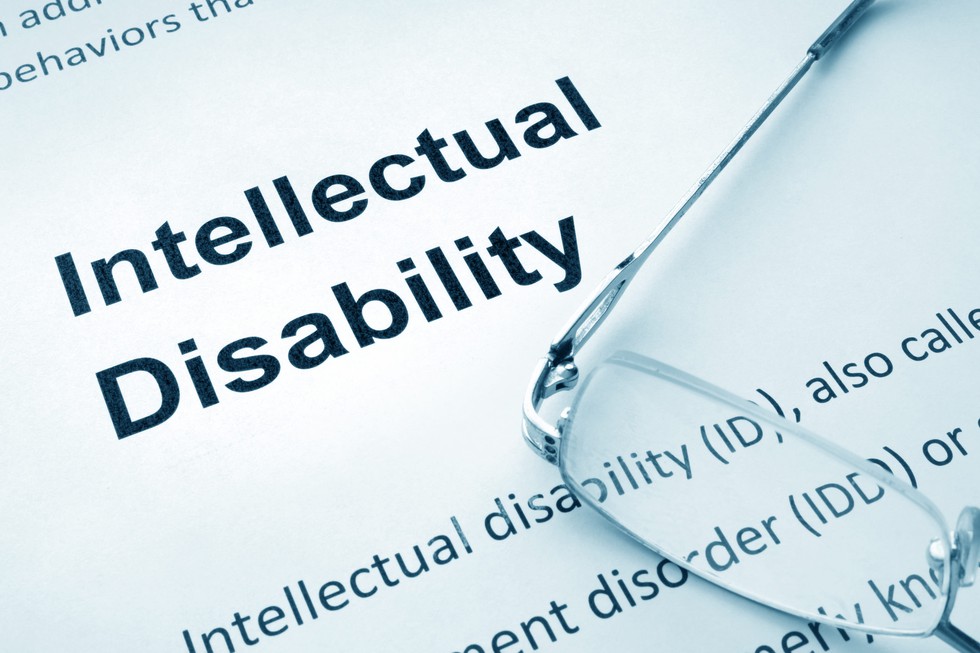
About National Institute for the Empowerment of Persons with Intellectual Disabilities (NIEPID):
- NIEPID (formerly the National Institute for the Mentally Handicapped), established in 1984, is an autonomous body under the administrative control of the Department of Empowerment of Persons with Disabilities (Divyangjan), Ministry of Social Justice & Empowerment.
- It is dedicated to providing quality services to Persons with Intellectual Disabilities (Divyangjan) in the national interest.
- It is the apex body functioning for training, research, and surveys in the field of intellectual disability in the country.
- The institute is headquartered in Secunderabad, Telangana, and has regional centres in Kolkata, Navi Mumbai and Noida.
- It empowers persons with intellectual disabilities (Divyangjan) to access state-of-the-art rehabilitation interventions, educational, therapeutic, vocational, employment, leisure and social activities, sports, cultural programmes and full participation.
- Objectives
- Human Resources Development
- Research and Development
- Development of models of care and rehabilitation.
- Documentation and dissemination.
- Consultancy services to voluntary organizations
- Community Based Rehabilitation
- Extension and Outreach programmes
- To achieve optimum results, the institute has developed and introduced innovative structured training courses like Early Intervention, Rehabilitation Psychology, Special Education, and Disability Rehabilitation at the Masters level.
- The Institute conducts international and national-level Conference/Seminars/Workshops on Persons with Intellectual Disabilities (Divyangjan) in partnership with leading voluntary organizations and parent associations.
3. What is a Payment Aggregator (PA)?
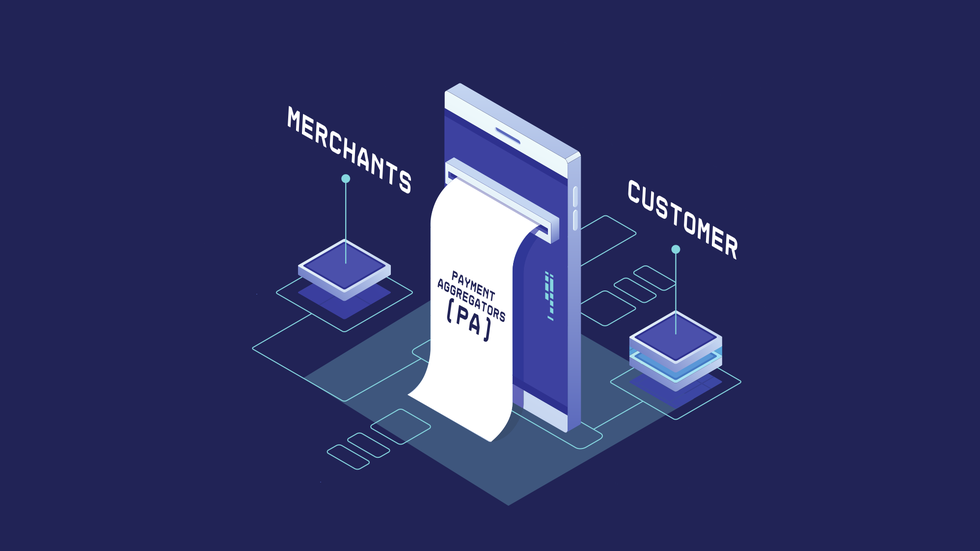
About Payment Aggregator (PA):
- A PA (also known as a merchant aggregator) is a third-party service provider that allows merchants to accept payments from customers by integrating them into their websites or apps.
- PAs enable their clients to accept various payment methods such as debit cards, credit cards, cardless EMIs, UPI, bank transfers, e-wallets, and e-mandates.
- PA provides a stack of multiple payment methods to merchants so that their customers can pay using their preferred mode of payment.
- Also, a payment aggregator does fund settlement, i.e., it moves the money from banks and other issuing entities to the merchants.
- Similarly, they also enable disbursing payments to various stakeholders, such as partners, employees, suppliers, and authorities.
- It allows merchants to accept bank transfers without setting up a bank-based merchant account. It means a merchant need not have a merchant account directly with the bank.
- A PA in India is incorporated under the Companies Act 2013.
- A PA can be a bank or a non-bank entity.
- Since a PA handles funds, it requires a license from the RBI.
- Only non-bank PAs require unique authorization from RBI as ‘handling funds’ is considered a part of the normal banking relationships for bank PAs.
- Examples: Amazon (Pay) India, Google India, Razorpay, Pine Labs, etc.
What is a Payment Gateway?
- It is a software service that connects your bank account to the platform where you need to transfer your money.
- It authorizes you to conduct an online transaction through different payment modes like net banking, credit card, debit card, UPI, or other online wallets.
- A Payment gateway plays the role of a third party that securely transfers your money from the bank account to the merchant’s payment portal.
Payment Aggregator v/s Payment Gateway:
- A payment gateway is a software that allows online transactions to take place, while a payment aggregator is the inclusion of all these payment gateways.
- While a payment gateway is an intermediary, the payment aggregator is the interface where the payment gateway processes the transactions.
- Most payment aggregators own payment gateways to offer various exclusive services to their merchant customers.
4. What is Nephrotic Syndrome?
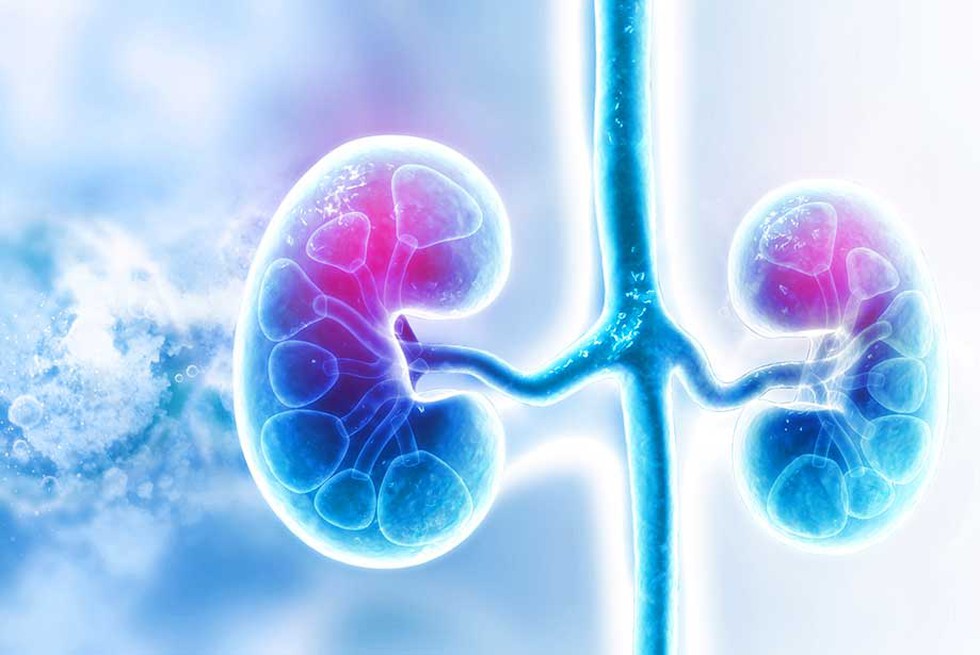
About Nephrotic Syndrome:
- It is a kidney disorder that causes your body to pass too much protein in your urine.
- It usually results from a problem with your kidneys’ filters (glomeruli).
- The kidneys remove waste and excess fluid from your blood through filtering units called nephrons.
- Each nephron contains a filter (glomerulus), which removes waste and excess fluids from your blood and send them to your bladder as urine.
- Common waste products include nitrogen waste (urea), muscle waste (creatinine), and acids.
- In healthy kidneys, the glomeruli filter out waste products.
- They allow your blood to retain the cells and proteins your body needs to function regularly.
- Nephrotic syndrome usually happens when the glomeruli are inflamed, allowing too much protein to leak from your blood into your urine.
- Causes:
- It is not a specific kidney disease.
- It can occur in any kidney disease that damages the filtering units in a certain way that allows them to leak protein into the urine.
- Some of the diseases that cause nephrotic syndrome, such as nephritis, affect only the kidney.
- Other diseases that cause nephrotic syndrome, such as diabetes and lupus, affect other parts of the body as well.
- Symptoms: Signs and symptoms of nephrotic syndrome include:
- Severe swelling (edema), particularly around your eyes and in your ankles and feet
- Foamy urine, a result of excess protein in your urine
- High fat and cholesterol levels in the blood. The medical term for it is “hyperlipidemia.”
- Weight gain due to fluid retention
- Fatigue
- Loss of appetite
- Nephrotic syndrome can lead to serious complications, including
- blood clots that can lead to thrombosis
- higher risk of infection caused by the loss of immunoglobulins, proteins in your blood that help fight viruses and bacteria
- high blood pressure, also called hypertension
- brief or long-lasting kidney problems, including chronic kidney disease and kidney failure
- Treatment: It includes addressing the underlying cause and taking steps to reduce high blood pressure, high cholesterol, swelling and infection risks. Treatment usually includes medications and changes to your diet.
4. Indian National Centre for Ocean Information Services (INCOIS)

About Indian National Centre for Ocean Information Services (INCOIS):
- It was established as an autonomous body in 1999 under the Ministry of Earth Sciences (MoES) and is a unit of the Earth System Science Organization (ESSO).
- Mandate: To provide the best possible ocean information and advisory services to society, industry, government agencies, and the scientific community through sustained ocean observations and constant improvements through systematic and focused research.
- Activities:
- Provides round-the-clock monitoring and warning services for the coastal population on tsunamis, storm surges, high waves, etc. through the in-house Indian Tsunami Early Warning Centre (ITEWC).
- The Intergovernmental Oceanographic Commission (IOC) of UNESCO designated ITEWC as a Regional Tsunami Service Provider (RTSP) to provide tsunami warnings to countries on the Indian Ocean Rim.
- Provides daily advisories to fisher folk to help them easily locate areas of abundant fish in the ocean while saving on both fuel and time used to search for the same.
- Short-term (3-7 days) Ocean State Forecasts (waves, currents, sea surface temperature, etc.) are issued daily to fisher folk, the shipping industry, the oil and natural gas industry, the Navy, the Coast Guard, etc.
- Deploys and maintains a suite of Ocean Observing Systems in the Indian Ocean to collect data on various oceanic parameters.
- Conducts systematic quality checks and archives all observational, satellite, and other oceanic data at the ESSO-INCOIS Data Centre, and then makes such data available to students, researchers, and any other users.
- INCOIS has been designated as the National Oceanographic Data Centre by the International Oceanographic Data Exchange Programme (IODE) of the IOC.
- Generates Global Ocean Analysis data using mathematical models and observations on a daily basis to provide the initial conditions to ocean-atmosphere coupled models used for the prediction of the monsoon and to understand oceanic processes.
- Established a national network (Indian Seismic and GNSS Network (ISGN)) that integrates Seismic and GNSS stations and provides high quality data for research and operational use.
- It serves as the National Argo Data Centre, Regional Argo Data Centre, and also the regional data centre and clearing house for the Indian Ocean region for the Indian Ocean Global Ocean Observing System (IOGOOS) Programme.
- Provides round-the-clock monitoring and warning services for the coastal population on tsunamis, storm surges, high waves, etc. through the in-house Indian Tsunami Early Warning Centre (ITEWC).
- International Involvement:
- It is a permanent member of the Indian delegation to the IOC and a founding member of the IOGOOS and the Partnership for Observing the Oceans (POGO), which is actively engaged in capacity building and international exchange of students and researchers.
- ESSO-INCOIS houses the IOGOOS secretariat and the Sustained Indian Ocean Biogeochemistry and Ecosystem Research (SIBER) International Programme Office.
- Through the Regional Integrated Multi-Hazard Early Warning System for Africa and Asia (RIMES), ESSO-INCOIS provides ocean information and forecasts to member countries.
5. ASEAN Future Forum
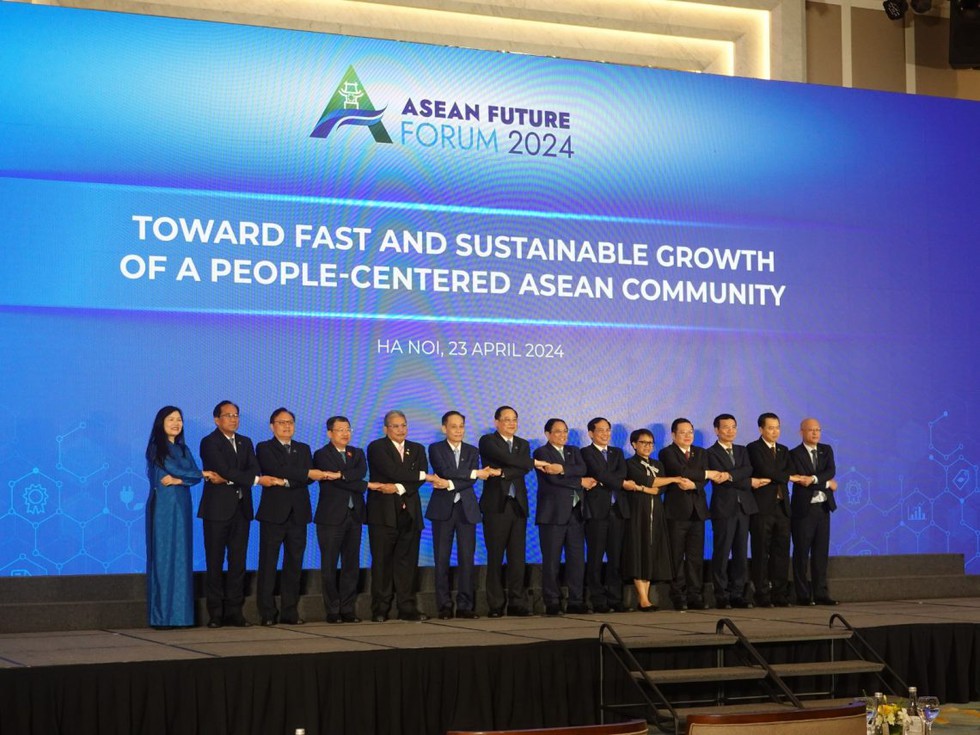
About ASEAN Future Forum:
- It acts as a platform for ASEAN and its partners to share new ideas and policy recommendations.
- It is aimed at creating a common platform for ASEAN member states as well as partner countries and ASEAN people to contribute to promoting and shaping the bloc’s development path.
- It was proposed by Vietnam at the 43rd ASEAN Summit in 2023.
- Theme of the first forum: Toward fast and sustainable growth of a people-centered ASEAN Community.
- It took place in Hanoi, Vietnam.
Key facts about ASEAN
- It is a group of the Association of Southeast Asian Nations, which was established in 1967 with the signing of the Bangkok declaration.
- Founding members: Indonesia, Malaysia, Philippines, Singapore and Thailand.
- Presently ASEAN comprises 10 member states namely Indonesia, Malaysia, Philippines, Singapore, Thailand, Brunei, Laos, Myanmar, Cambodia and Vietnam.
- It promotes intergovernmental cooperation and facilitates economic, political, security, military, educational, and sociocultural integration between its members and other countries in Asia.
6. What is Auto-Brewery Syndrome?
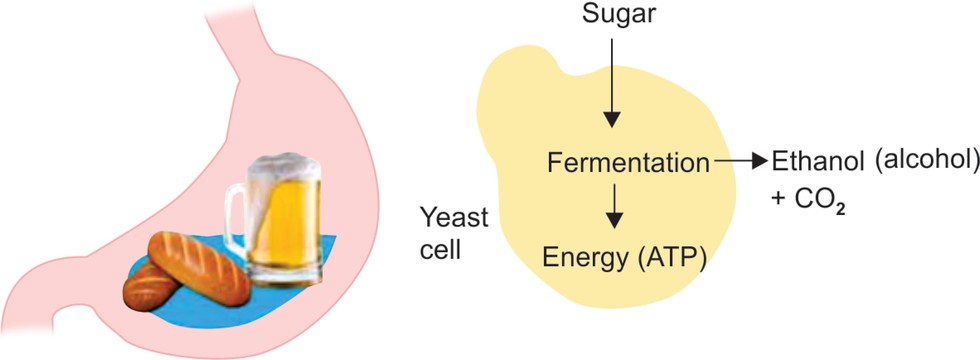
About Auto-Brewery Syndrome:
- It is also known as gut fermentation syndrome.
- It is a condition in which the body turns sugary and starchy food into alcohol, causing symptoms similar to that of a drunken man.
- It is a condition in which ethanol is produced through endogenous fermentation by fungi or bacteria in the gastrointestinal (GI) system, oral cavity, or urinary system.
- In other words, while yeasts and fungi feed on sugars and starch and convert them into energy, the process also creates waste in the form of carbon dioxide and ethanol (alcohol).
- Symptoms: Its symptoms include being drunk without drinking alcohol or getting very drunk with only a little alcohol. Dizziness, headache, dehydration are a few among several other symptoms of the condition.
- People with diabetes, obesity, and Crohn disease are more likely to get ABS. However, it can occur in healthy individuals as well.
- Many medical reports suggest that people who suffer from ABS should avoid foods that are high in carbohydrates and sugar.
7. What are antihistamines?
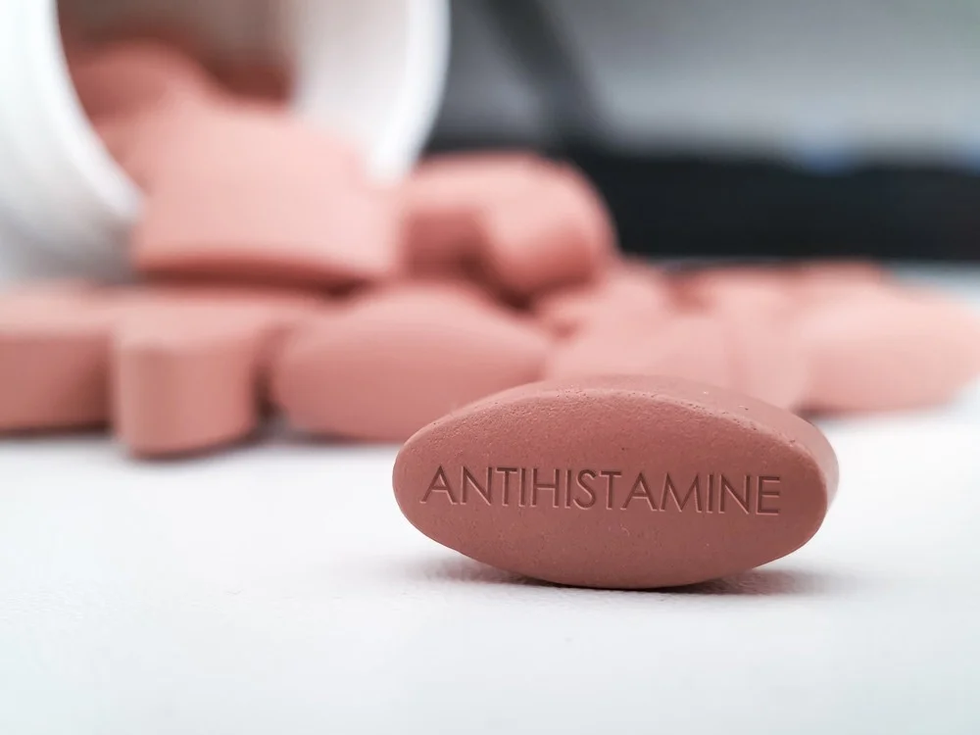
About Antihistamines:
- An antihistamine drug acts against the activity of the histamine receptor — proteins that bind to a compound in the body called histamine. This compound consists of two attached to each other: ethylamine (CH3CH2NH2) and imidazole (C2N2H4), the latter being a ring.
- Depending on its location, histamine performs broadly four types of functions, each involving different histamine receptors called H1, H2, H3 and H4.
- The H1 receptor is found mostly in the inner surface of blood and lymphatic vessels, neurons, and smooth muscle cells.
- H1 antihistamines are used to block the effects of minor allergies. Certain cells in the gastric glands release histamine, which encourage nearby parietal cells with H2 receptors to release gastric acid for digestion.
- H3 receptors are located in cells in the central nervous system, where they use histamine to regulate the release of other neurotransmitters, including dopamine and serotonin.
- Similarly, H4 receptors use histamine to regulate the body’s inflammatory response, including allergic reactions as well.
- Currently, there is a lot of research ongoing on H3 and H4 receptors, in particular to alleviate the effects of neurological and immunological disorders, respectively, using specialised drugs.
8. What is a Magnetar?
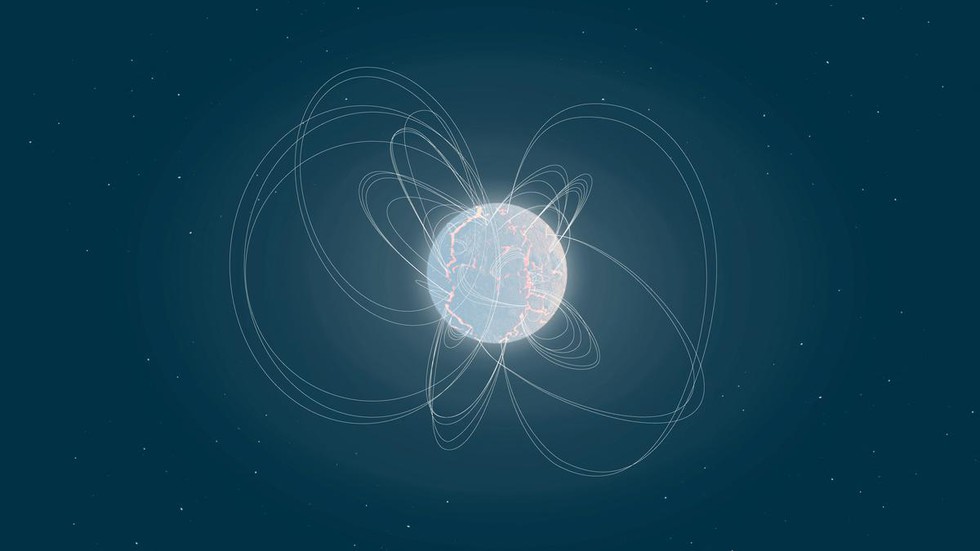
About Magnetar:
- It is an exotic type of neutron star with the defining feature that it has an ultra-powerful magnetic field.
- The field is about 1,000 times stronger than a normal neutron star and about a trillion times stronger than the Earth’s.
- Apart from ultra-powerful magnetic fields, magnetars also release vast amounts of energy in the form of flares, X-rays and gamma-ray bursts.
- They are therefore associated with extreme events in the universe, making them perhaps the most bizarre objects in the cosmos next to black holes.
- The magnetic field of a magnetar may be caused by a neutron star’s interior – thought to be made up of neutrons, quarks and exotic states of matter such as Bose-Einstein Condensates – becoming a superconducting fluid.
- Thus, when the star rotates, it would behave like a huge dynamo, generating an immense magnetic field.
What is Messier 82?
- It is a galaxy nicknamed as "cigar galaxy" because when viewed edge-on it has an elongated and cigar-like shape. It is 12 million light-years from Earth in the constellation Ursa Major.
- The M82 giant flare was the most distant known but not the most energetic.
- A giant flare originates from a reconfiguration and a reconnection of the magnetic field of the magnetar.
9. What is Phi-3-mini?
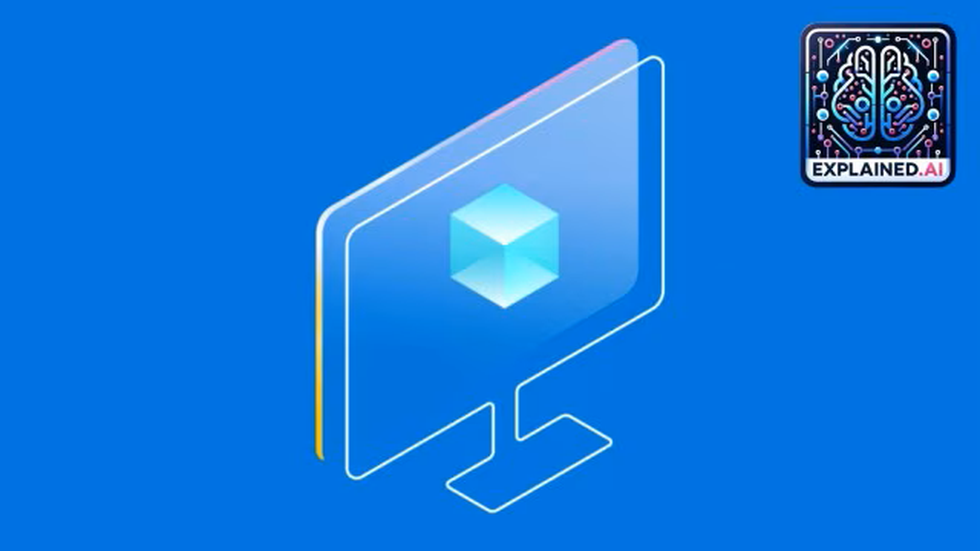
About Phi-3-mini:
- It is believed to be the first among the three small models that Microsoft is planning to release.
- It has reportedly outperformed models of the same size and the next size up across a variety of benchmarks, in areas like language, reasoning, coding, and maths.
- It is the first model in its class to support a context window of up to 128K tokens, with little impact on quality.
- The amount of conversation that an AI can read and write at any given time is called the context window, and is measured in tokens.
- It is a 3.8B language model and is available on AI development platforms such as Microsoft Azure AI Studio, HuggingFace, and Ollama.
- Phi-3-mini is available in two variants, one with 4K context-length, and another with 128K tokens.
How is Phi-3-mini different from Large Language Models (LLMs)?
- Phi-3-mini is a Small Language Model (SLM).
- SLMs are more streamlined versions of large language models. When compared to LLMs, smaller AI models are also cost-effective to develop and operate, and they perform better on smaller devices like laptops and smartphones.
- SLMs are great for resource-constrained environments including on-device and offline inference scenarios and such models are good for scenarios where fast response times are critical, say for chatbots or virtual assistants.
- SLMs can be customised for specific tasks and achieve accuracy and efficiency in doing them. Most SLMs undergo targeted training, demanding considerably less computing power and energy compared to LLMs.
- SLMs also differ when it comes to inference speed and latency. Their compact size allows for quicker processing. Their cost makes them appealing to smaller organisations and research groups.


























































































































































.png)
.png)
.png)
.png)
.png)


.png)
.png)
.png)





.png)
.png)






.png)
.png)
.png)
.png)
.png)
.png)
.png)
.png)
.png)

.png)







.png)
.png)


.png)
.png)
.png)


.png)

.png)
.png)





.jpg)

.png)
.png)


.png)

.png)
.png)
.png)

.jpg)

.jpg)


.png)

.png)
.png)
.png)
.png)
.png)
.png)
.png)
.png)
.png)
.png)




.png)

.png)





.png)
.png)
.png)
.png)
.png)
.png)
.png)
.png)
.png)
.png)
.jpg)
.jpg)

.png)
.png)
.png)
.png)
.png)
.png)
.png)
.png)
.png)
.png)
.png)
.png)
.png)
.png)
.png)
.png)
.png)
.png)
.png)
.png)
.png)
.png)



.png)
.png)

.jpg)
.jpg)


.jpg)
.jpg)
.jpg)
.jpg)
.jpg)

.jpg)








.jpg)
.jpg)
.jpg)
.jpg)
.jpg)

















.jpg)
.jpg)







.jpg)


















.jpg)
.jpg)






























































































.jpg)
.jpg)


























.jpg)

.jpg)










.jpg)








.jpg)




.jpg)










.jpg)


















.jpg)












































.jpg)














.jpg)
.jpg)
.jpg)





.jpg)

.jpg)
.jpg)





































































.jpg)


































.jpg)
.jpg)
















































.jpg)












.jpg)


.jpg)




.jpg)
.jpg)
.jpg)

.jpg)
.jpg)
.jpg)
.jpg)

.jpg)
.jpg)
.jpg)

.jpg)
.jpg)
.jpg)
.jpg)
.jpg)
.jpg)
.jpg)
.jpg)

.jpg)


.jpg)
.jpg)
.jpg)
.jpg)
.jpg)
.jpg)
.jpg)
.jpg)
.jpg)
.jpg)











.jpg)
.jpg)





.jpg)
.jpg)
.jpg)
























.jpg)
























.jpg)









.jpg)
.jpg)







.jpg)
.jpg)









































.jpg)
.jpg)
.jpg)
.jpg)
.jpg)

.jpg)
.jpg)
.jpg)
.jpg)
.jpg)


.jpg)
.jpg)
.jpg)
.jpg)
.jpg)

.jpg)
.jpg)
.jpg)
.jpg)
.jpg)
.jpg)
.jpg)
.jpg)
.jpg)
.jpg)
.png)

.png)
.png)

.png)
.png)
.png)
.png)


.jpg)
.jpg)

.jpg)
.jpg)
.jpg)

.png)
.png)
.png)
.png)
.png)
.png)
.png)

.png)
.png)
.png)
.png)
.png)
.png)
.png)
.png)
.png)
.png)





































































-min.png)



.png)




.png)








































